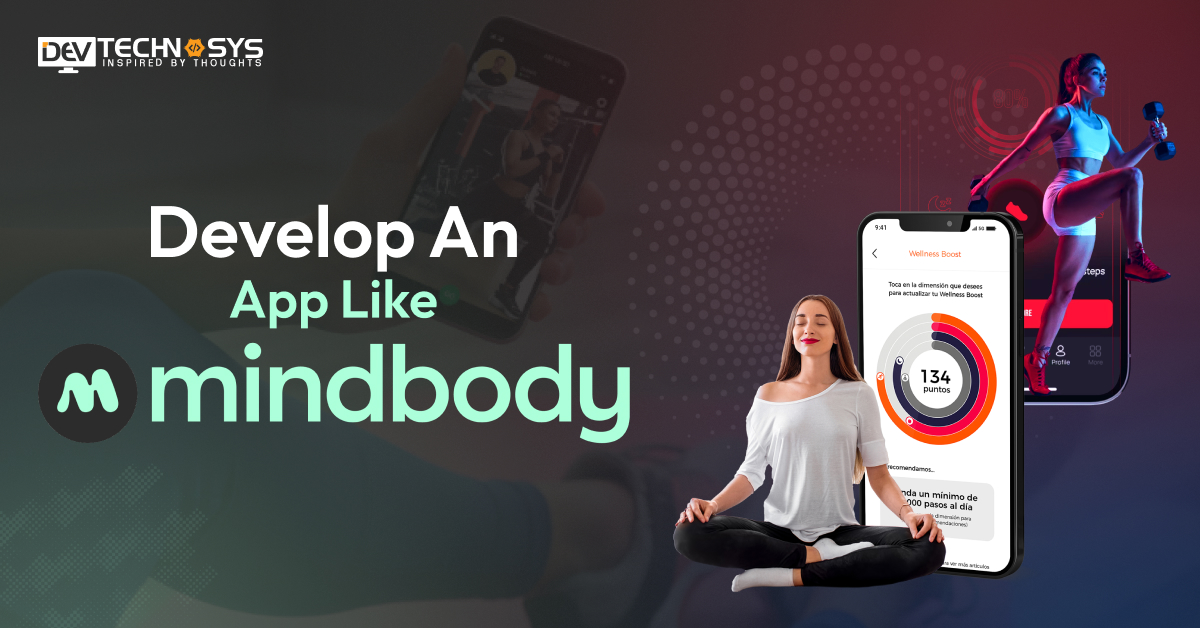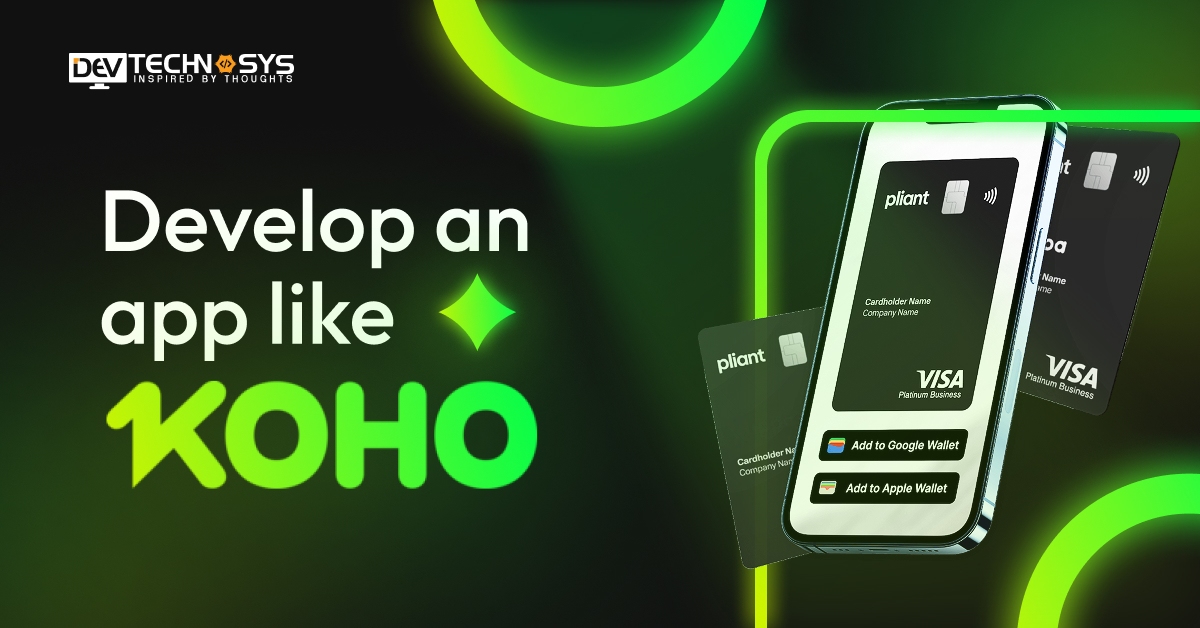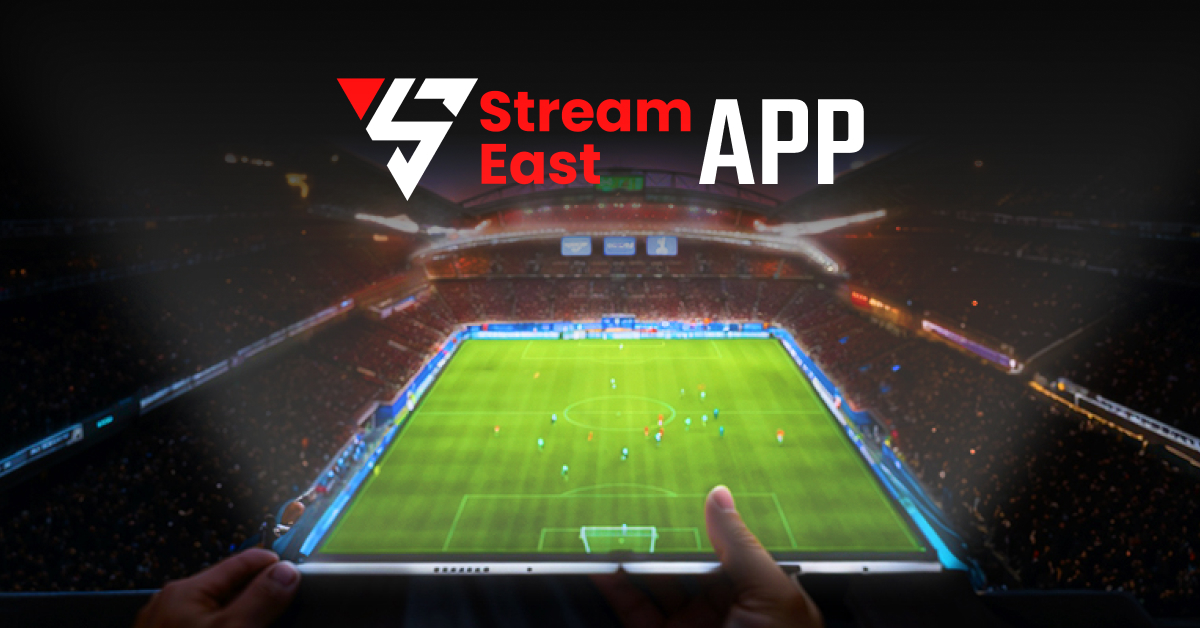In this rapid transformation world, health and fitness are one of the necessary things in daily life. Nowadays, everyone focuses on a healthy diet, daily exercise, and many other things to get fit. That’s why the demand for fitness applications is increasing, and one of these applications has already gained huge popularity, known as Mindbody. It enables users to manage their appointments, payments, membership, and more.
As per the ground-level report, the fitness applications market is valued at around $8.30 billion in 2025. This is projected to grow to around $10.06 billion by the end of 2029.
The above data depicts that investing in fitness app development is a massive opportunity to grow the business to the next level.
Let’s explore how to develop an app like Mindbody, what features must be integrated, monetization techniques, and overall development cost.
What is Mindbody App?
The Mindbody app helps users find nearby fitness, health, and beauty providers. It enables users to find, book, and pay for courses, appointments, and experiences at studios, gyms, spas, and salons. If you develop a fitness app like Mindbody, which includes features such as scheduling, reviews, and tailored suggestions, it helps people maintain a healthy lifestyle by making self-care and wellness options available.
- Class & Appointment Booking
- Search & Discovery
- Schedule Management
- Deals & Intro Offers
Market Analysis of Fitness and Wellness Applications
- In 2025, the fitness apps market is expected to be worth around $8.30 By the end of 2029, this is expected to increase to over $10.06 billion.
- According to the global market, revenue is anticipated to rise at a CAGR of 91% every year from 2025 to 2029.
- By 2029, it is anticipated that user penetration will have increased to 21% from 12.21% in 2025.
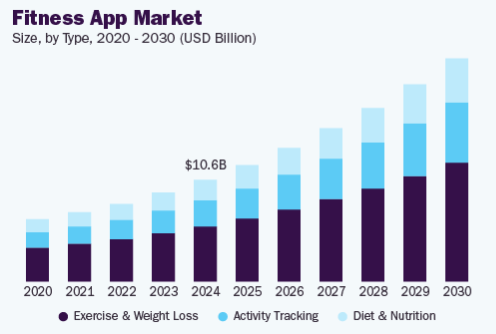
- It is anticipated that the average revenue per user (ARPU) will be $20.79
- In contrast to other countries, the United States will create the greatest income, with US$2.49 billion in 2025.
10 Popular Fitness Apps Like Mindbody
Learn about 10 best fitness applications, such as Mindbody, that are ideal for fitness lovers and those seeking self-care. These apps may help you schedule courses, organize exercises, and keep on track with your wellness objectives.
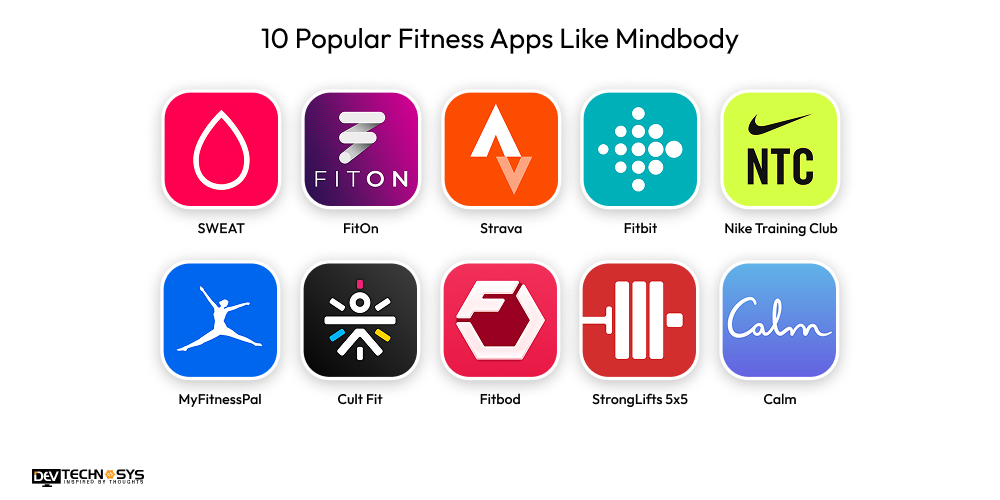
Applications |
Download Users |
Stores Ratings |
Apps Launched On |
Platform Accessibility |
| SWEAT | 5M+ | 4.5 | 2015 | Android/iOS |
| FitOn | 5M+ | 4.6 | 2019 | Android/iOS |
| Strava | 50M+ | 4.5 | 2009 | Android/iOS |
| Fitbit | 50M+ | 4.5 | 2008 | Android/iOS |
| Nike Training Club | 10M+ | 4.7 | 2009 | Android/iOS |
| MyFitnessPal | 100M+ | 4.7 | 2005 | Android, iOS, watchOS, Wear OS |
| Cult Fit | 10M+ | 4.3 | 2016 | Android/iOS |
| Fitbod | 10M+ | 4.1 | 2015 | Android/iOS |
| StrongLifts 5×5 | 10M+ | 4.7 | 2011 | Android/iOS |
| Calm | 50M+ | 4.3 | 2012 | Android/iOS |
Why Do Entrepreneurs Want to Invest in Fitness and Wellness App Development?
In today’s health-conscious world, fitness and wellness apps have become essential tools for millions. Entrepreneurs are increasingly investing in this wellness app development, and here’s why:
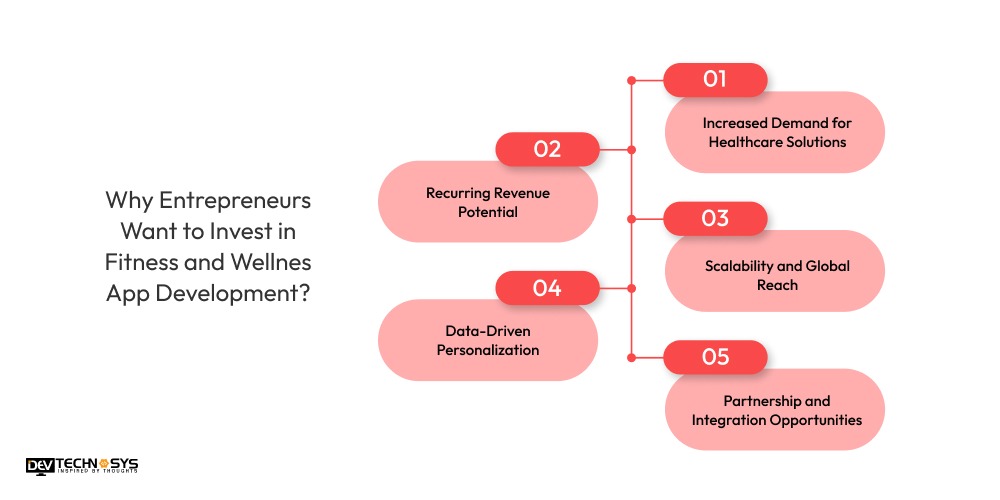
1. Increased Demand for Healthcare Solutions
Health and wellbeing have been worldwide objectives, particularly after the COVID-19 epidemic. Consumers are actively looking for digital solutions to improve their fitness, mental health, and overall lifestyle. This demand opens up a profitable potential for entrepreneurs to provide individualized, on-demand health services through mobile apps.
2. Recurring Revenue Potential
Fitness and wellness applications often employ subscription-based or freemium models, which generate a consistent source of recurring money. Premium exercises, nutrition programs, and meditation sessions provide a variety of revenue options, including in-app sales, subscriptions, and collaborations with fitness companies.
3. Scalability and Global Reach
Benefit from fitness trainer apps are growing fast and reaching a worldwide audience with low overhead. Using a single platform, entrepreneurs may grow into worldwide markets, provide multilingual assistance, and modify material depending on regional health trends.
4. Data-Driven Personalization
Modern fitness applications use artificial intelligence and analytics to deliver personalized training plans, nutrition recommendations, and wellbeing advice. Entrepreneurs find value in this data-rich environment, which enables better user retention, targeted marketing, and product innovation depending on user behavior.
5. Partnership and Integration Opportunities
Mindbody similar apps can be integrated with wearables (such as Apple Watch, Fitbit, and Garmin), health platforms, and third-party services to improve the user experience. These fitness app ideas collaborations may lead to increased income streams, brand visibility, and technical improvement, making the app more competitive and appealing to a larger audience.
How AI Can Improve Fitness Apps Like Mindbody?
- AI analyzes user data to create tailored workout plans that match fitness levels, goals, and preferences, boosting effectiveness and motivation.
- AI optimizes class and appointment schedules by predicting user availability and peak times, maximizing studio occupancy and user convenience.
- AI-powered motion tracking offers instant feedback on exercise form, reducing injury risk and improving workout quality for users.
- AI chatbots provide 24/7 fitness guidance, answer questions, and motivate users, simulating a personal trainer experience within the app.
- AI identifies user habits and preferences to customize notifications and reminders, enhancing app engagement and consistency.
7 Basic Steps to Develop An App Like Mindbody
Want to develop an app like Mindbody? Discover the seven essential steps to guide your development journey, from research and feature planning to design, MVP creation, testing, and launch. These steps ensure your app meets user needs, scales effectively, and stands out in a competitive market. So, here we provide the Mindbody mobile app development process:
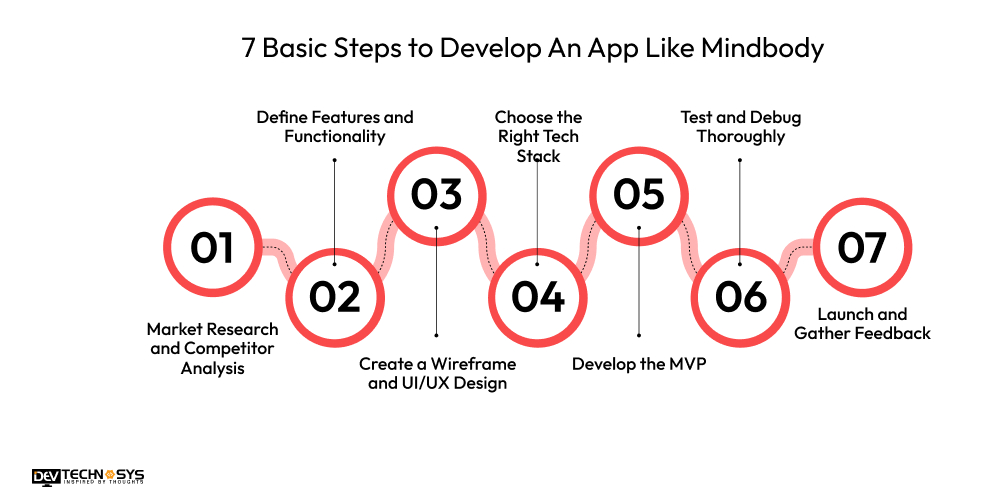
1. Market Research and Competitor Analysis
Start by analyzing the wellness and fitness app market. Identify user needs, trends, and key features of competitors like Mindbody. Hire developers from a mobile application development company to understand your target audience, which helps you design a unique value proposition and avoid repeating existing solutions. Thorough research sets the foundation for a successful and competitive app.
2. Define Features and Functionality
List essential features such as appointment booking, user profiles, payment integration, real-time notifications, and business dashboards. Decide on advanced features like AI recommendations, wearable integration, or virtual classes. Defining a clear feature set helps prioritize development and ensures alignment with business goals and user expectations.
3. Create a Wireframe and UI/UX Design
In the third cross-platform development process, design the app’s layout and user flow through wireframes and mockups. Focus on creating a seamless and intuitive user experience with engaging visuals. Prioritize easy navigation, fast loading times, and mobile responsiveness. A well-designed interface increases user satisfaction, engagement, and long-term app retention.
4. Choose the Right Tech Stack
Select the appropriate technologies for your app’s front end, back end, and database. Consider frameworks like React Native or Flutter for cross-platform development. Choose scalable back-end services such as Node.js or Firebase. The right tech stack supports performance, security, and future scalability.
5. Develop the MVP
Let’s move to the fifth stage, hire a salon app development company to build a basic version of the app with core features to test the concept. This helps gather user feedback, validate assumptions, and make improvements before full-scale development. An MVP approach reduces risks and allows you to enter the market faster with fewer resources.
6. Test and Debug Thoroughly
Conduct extensive testing on usability, functionality, security, and performance across multiple devices and operating systems. Use manual and automated testing tools to identify bugs. Testing ensures a smooth user experience, improves app stability, and prevents issues after launch.
7. Launch and Gather Feedback
In the last stage to develop a skincare application, deploy the app to app stores and promote it through targeted marketing. Monitor user engagement, collect feedback, and address any early issues. Use insights from real users to guide updates and improvements. Continuous feedback loops help evolve the app and build user loyalty.
10 Must-Have Simple and Premium Features of Apps like Mindbody
To build a successful wellness and fitness app like Mindbody, certain features are essential to meet user expectations and ensure smooth business operations. Here are 10 must-have features:
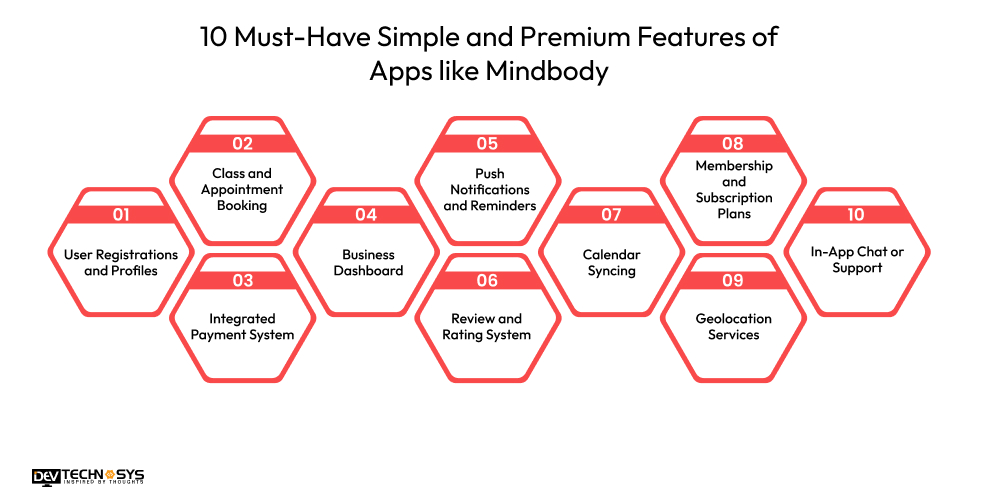
1. User Registrations and Profiles
Mindbody similar apps allow people to register via email, phone, or social media. Personal profiles allow users to keep track of their bookings, preferences, and activity history.
2. Class and Appointment Booking
Allow users to quickly explore available programs, appointments, or services and book with just a few taps. Real-time availability and rapid confirmation enhance the user experience.
3. Integrated Payment System
Payment gateway integration supports various payment methods, including credit cards, mobile wallets, and in-app purchases, enabling safe and frictionless payments. Supporting numerous currencies and payment channels improves worldwide usability.
4. Business Dashboard
Provide studios and professionals with a single admin interface where they can handle reservations, timetables, client data, and revenue statistics.
5. Push Notifications and Reminders
Send out real-time messages about forthcoming sessions, scheduling changes, promotional offers, and reminders to boost engagement and decrease no-shows.
6. Review and Rating System
Mindbody alternatives allow users to provide comments on classes and services. Positive ratings foster trust, whereas feedback helps firms develop.
7. Calendar Syncing
Mindbody clone app allow synchronization with Google Calendar or iCal for convenient schedule management, guaranteeing that users never miss an appointment.
8. Membership and Subscription Plans
Support recurring subscriptions and customized packages. Businesses that use flexible pricing strategies find it easier to attract and keep clients.
9. Geolocation Services
If you develop a cosmetic store app like Sephora, it offer GPS to guide users to nearby studios or services, increasing local involvement and convenience.
10. In-App Chat or Support
Mindbody alternatives provide in-app chat or support channels to help consumers quickly, increasing happiness and confidence.
What is the Cost to Develop an App Like Mindbody?
The cost to develop an app like Mindbody ranges from $8000 to $25,000, depending on complexity, features, and development location. A basic version with core features like booking, payments, and user profiles may cost around $10,000–$16,000. Advanced features like AI recommendations, wearable integration, and real-time analytics can push costs higher.
The cost to develop a mobile app like Mindbody also varies based on whether you hire a freelance team, an agency, or in-house developers. Ongoing expenses for maintenance, updates, and cloud hosting should also be considered in your budget.
Cost to Build an App Like Mindbody
Fitness App Development
|
Estimated Cost |
Time Frame |
Basic App Development
|
$8000 – $12000 | 2 to 4 Months |
Mid-Premium App Development
|
$14000 – $19000 | 5 to 8 Months |
High-Premium App Development
|
$25000+ | 9+ Months |
What Are the Factors That Affect the Fitness App Development Cost?
Discover the key factors that influence Mindbody app development costs, from feature complexity and platform choice to design, technology stack, and development team location. Understanding these elements helps entrepreneurs budget effectively and build high-quality apps that meet user needs while balancing expenses and timelines.
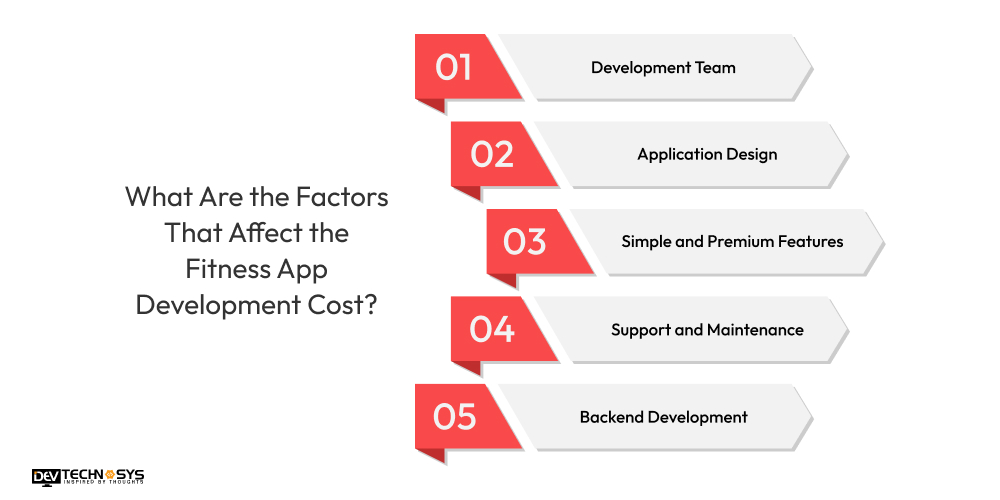
1. Development Team
The development team’s size, experience, and location all have a substantial influence on expenses. Hiring experienced developers or specialized expertise boosts costs. Offshore teams may decrease expenses, but they require greater administration. A balanced, professional workforce promotes efficient development and quality, which influences the cost to develop a fitness app.
Developers Experience level |
United States |
United Kingdom |
Southeast Asia |
Eastern Europe |
| Junior-level | $15 – $25 | £14 – £24 | $12 – $22 | $10 – $20 |
| Mid-level | $30 – $50 | £27 – £44 | $25 – $35 | $25 – $33 |
| Senior-level | $60 – $80 | £50 – £65 | $40 – $55 | $40 – $50 |
2. Application Design
It include UI/UX, visuals, animations, and responsiveness. Complex, specialized designs need more time and resources, increasing expenses. Intuitive, visually appealing designs increase user engagement, but need experienced designers. Simple templates are less expensive, but they may have an impact on user experience and branding.
Design Quality |
Cost Estimation |
| Basic Design | $8,000 – $12,000 |
| Complex Design | $15,000 – $22,000 |
3. Simple and Premium Features
Basic functionality, such as registration, booking, and payments, is less expensive to create. Premium features, such as AI suggestions, wearable integration, video streaming, and tailored planning, increase complexity and development time, resulting in a higher cost for fitness tracking app development. The balance of features has a direct impact on the app’s functioning and budget.
Basic Features |
Estimated Cost |
Advanced Features |
Estimated Cost |
| Profile Management | $6,000 – $9,000 | AI-Powered Personalized Plans | $4,000 – $7,000 |
| Class & Appointment Booking | $4,000 – $7,000 | Wearable Device Integration | $3,000 – $5,000 |
| Payment Integration | $8,000 – $12,000 | Gamification & Challenges | $10,000 – $14,000 |
| Search & Filters | $7,000 – $11,000 | In-App Nutrition & Diet Tracking | $7,000 – $10,000 |
| Basic Calendar Sync | $10,000 – $12,000 | Multi-Location Management | $10,000 – $15,000 |
Interested in a chatbot demo, pricing, or more info? Fill out the form our expert will contact you shortly.
Chatbot Demo
Cost to Develop an app
Industry Report
Case Study
4. Support and Maintenance
Post-launch support includes bug fixes, feature updates, and guaranteeing compatibility with new operating system versions. The ongoing maintenance expenditures include server hosting, security, and customer support. Regular upgrades are critical for user retention, but they increase the overall cost of Mindbody app development services.
Service Level |
Description |
Estimated Annual Cost (USD) |
Estimated Time |
| Basic Support | Bug fixes, minor updates | $3,000 – $6,000 | Ongoing |
| Comprehensive Support | Frequent updates, performance optimization | $6,000 – $9,000 | Ongoing |
5. Backend Development
The backend drives the app’s functionality, including data storage, user administration, and integrations. Complex backend systems with real-time synchronization, analytics, and scalability demand more development time and resources, which raises the cost of yoga app development services. A reliable backend guarantees that the program runs smoothly and securely.
Backend Complexity |
Estimated Cost (USD) |
Estimated Time |
| Basic Backend | $5,000 – $10,000 | 3 – 6 weeks |
| Advanced Backend | $10,000 – $18,000 | 6 – 10 weeks |
5 Money-Making Techniques of Fitness Applications Like Mindbody
It’s great to create a mobile app like Mindbody, which can easily generate multiple monetization strategies while providing valuable services to users and businesses. Here are five effective money-making techniques commonly used:
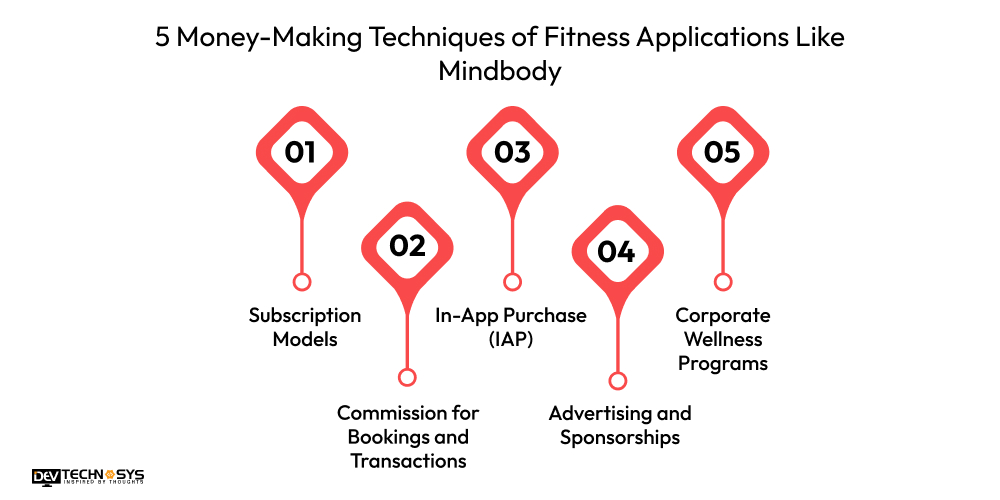
1. Subscription Models
The Mindbody clone apps provide tier-based membership options that give users access to premium content, including exclusive exercises, individual coaching, and unlimited class reservations. Monthly or annual memberships generate consistent, predictable revenue while fostering long-term user involvement.
2. Commission for Bookings and Transactions
The fitness on-demand app development solutions often charge service providers a commission or transaction fee for each booking made through the platform. This pay-per-use strategy ties income creation with app usage, monetizing every appointment or class reservation made through the app.
3. In-App Purchase (IAP)
Aside from memberships, applications include in-app purchases such as single-session passes, specific training programs, diet plans, and wellness challenges. These one-time purchases allow consumers to pay as they go without committing to long-term subscriptions.
4. Advertising and Sponsorships
The Mindbody like app for art studio feature sponsored content, product placements, or targeted advertising from health and wellness companies. According to the MVP app development company, this advertising money helps to fund free app features and strengthens corporate collaborations, so increasing brand reach and user value.
5. Corporate Wellness Programs
Fitness apps like Mindbody collaborate with businesses to provide customized wellness programs for employees. These B2B contracts frequently include higher-value offers and bulk subscriptions, generating consistent revenue and growing the app’s market beyond individual customers.
Conclusion
To develop an app like Mindbody, it requires careful planning, the right technology, and a clear understanding of user needs. Partnering with a reliable fitness app development company ensures expert guidance through design, development, testing, and launch.
Incorporating essential and advanced features can create a seamless user experience that drives engagement and revenue. With the growing demand for digital wellness solutions, investing in a robust fitness app can position your business for long-term success in the competitive health and wellness industry.
Frequently Asked Questions
1. How Much Does it Cost to Develop an App Like Mindbody?
The cost to build an app like Mindbody is around $8,000 and $25,000, depending on features, design complexity, and developer location. Costs vary with platform choice, tech stack, and whether you build a basic MVP or a full-featured app.
2. How Much Time Does It Take To Create an App Like Mindbody?
To create an app like Mindbody, it typically takes 3 to 6 months, depending on complexity, feature set, and team size. A basic MVP may take 2–4 months, while a fully-featured, polished version can require 6 months or longer.
3. Which Technologies Are Used to Make an App Like Mindbody?
To make an app like Mindbody, technologies like React Native, Flutter, Node.js, Firebase, MongoDB, and AWS are commonly used, along with Swift or Kotlin for native iOS and Android development.
4. What Are the Maintenance Costs Post-Launch?
Post-launch maintenance costs typically range from 15% to 20% of the initial development cost annually. This includes bug fixes, feature updates, server fees, security patches, and compatibility updates to ensure the app runs smoothly across all devices and platforms.
5. Do I Need Both iOS and Android apps?
Yes, developing both iOS and Android apps ensures wider reach and accessibility. Most users are on these platforms, so supporting both maximizes market potential, user engagement, and revenue opportunities for your fitness and wellness app.
